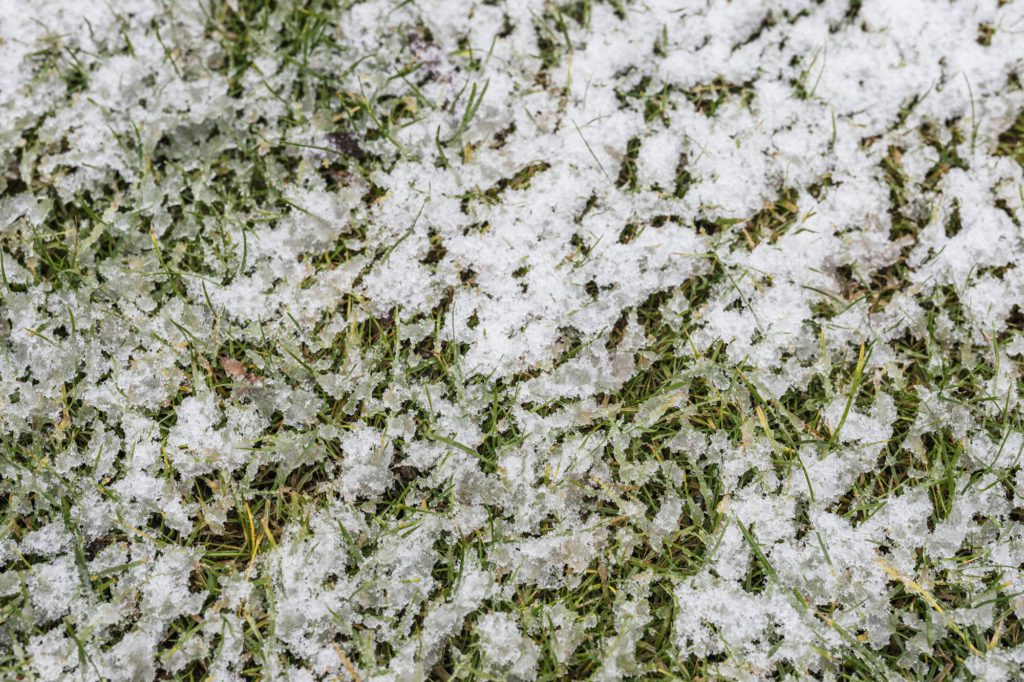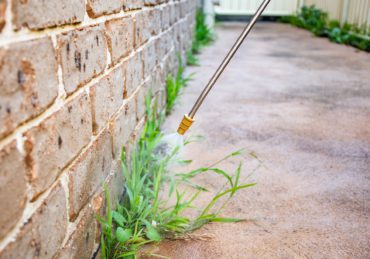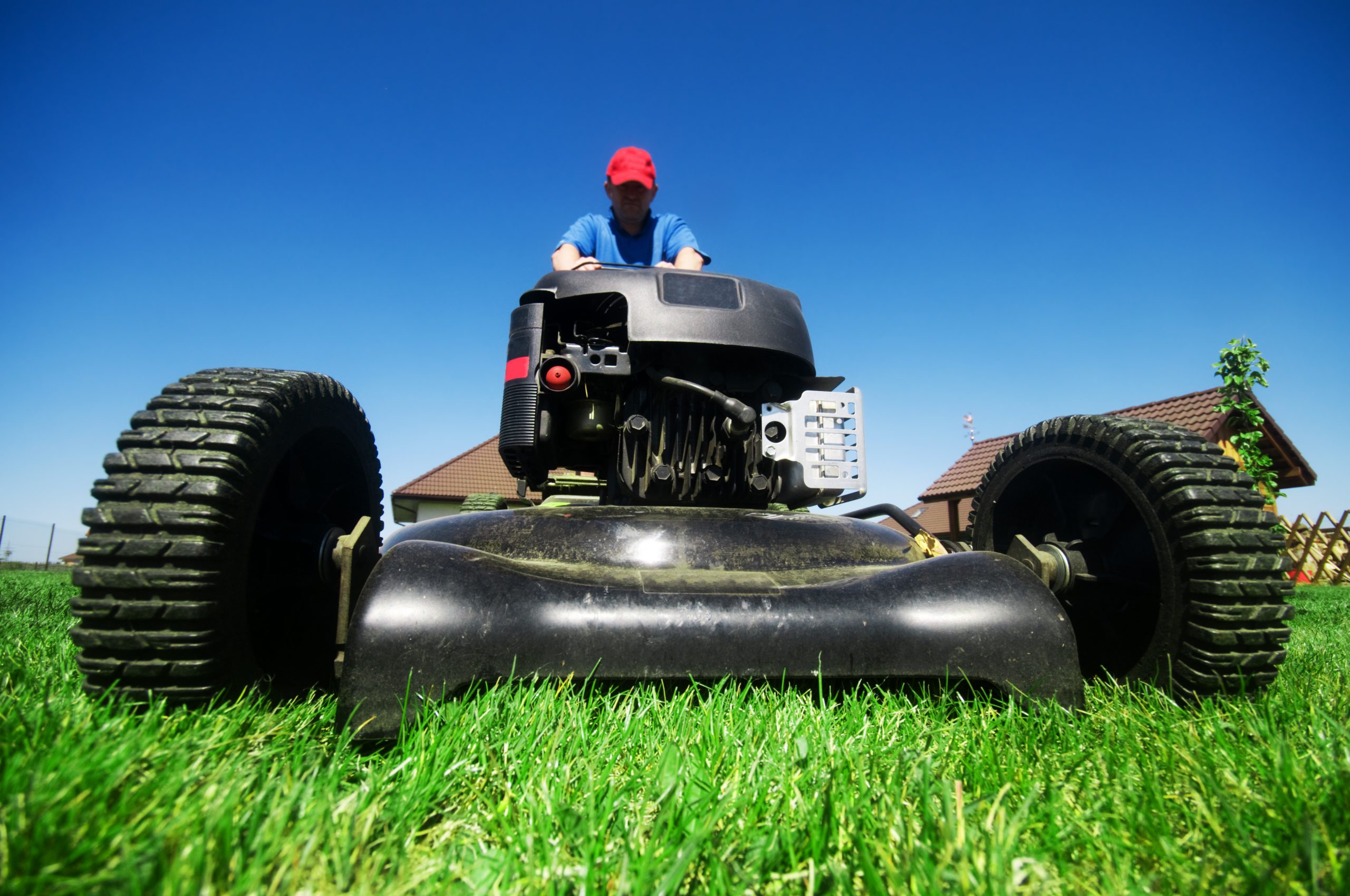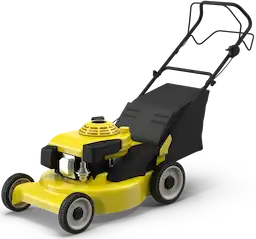When your lawn stops growing, it’s not dead, it’s waiting
You mow less, see fewer weeds, and maybe breathe a little easier in December. But if you’ve ever looked out at a patchy, dull lawn in March and thought, What happened?, chances are winter set it back more than you realized.
As temperatures drop and sunlight hours shrink, grass growth slows or stops depending on your grass type and region. That doesn’t mean you should step back and ignore it. It means winter grass care takes on a different shape, one that protects roots, prevents disease, and sets you up for early green-up in spring.
Cool-season lawns stay semi-active in winter, especially if soil temps hover between 35 and 50°F. Warm-season lawns, on the other hand, go fully dormant and may need overseeding to keep from turning into a brown mat for months.
Reality Check: A neglected winter lawn won’t bounce back like a dog after a nap. Root damage, crown dehydration, and fungal infections can leave visible scars when the snow melts.
Does grass grow in the winter? Not always, but it doesn’t stop living
A lot of homeowners assume growth either “on” or “off.” In reality, winter lawn growth looks more like a dimmer switch. Most northern grasses, fescue, bluegrass, rye, don’t stop cold. They just shift into slow-mo. Root systems continue mild activity as long as the soil isn’t frozen solid.
In the South, warm-season grasses like Bermuda or Zoysia turn tan and brittle as they shut down completely. But you can still bring color back with winter grass seed, ryegrass is a common choice to overseed dormant lawns for temporary winter green.
Just don’t expect much visible blade growth. At best, you’ll see 10–30% of typical summer growth during mid-winter.
| Month | Cool-Season Grass | Warm-Season Grass |
|---|---|---|
| January | ▓ (very low) | ░ (dormant) |
| February | ▓ | ░ |
| March | ▓▓▓ | ░░ |
| April | ▓▓▓▓▓ | ▓ |
| May | ▓▓▓▓▓▓ | ▓▓▓ |
| June | ▓▓▓ | ▓▓▓▓▓ |
| July | ░░ | ▓▓▓▓▓▓ |
| August | ░░ | ▓▓▓▓▓▓ |
| September | ▓▓▓ | ▓▓▓▓ |
| October | ▓▓▓▓ | ▓▓ |
| November | ▓▓ | ░░ |
| December | ▓ | ░ |
Picking the right winter grass seed for your region and goals
Maybe your lawn thins out every winter, or maybe you want to patch up some fall damage before the snow settles. Either way, picking the right seed is step one.
Cool-season options for true winter growth
If you live in the Northeast, Midwest, or Pacific Northwest, you’re probably working with cool-season grasses. For lawns staying green in winter or for dormant seeding, these are your go-to options:
- Tall fescue: Tolerates foot traffic, handles shade, and holds color longer into cold spells.
- Kentucky bluegrass: Denser look, spreads through underground rhizomes, but slower to germinate.
- Perennial ryegrass: Germinates quickly and adds color fast, great for overseeding warm-season lawns too.
- Fine fescue: Does best in shade and low-input areas. It’s slow growing but durable.
Ryegrass for overseeding dormant warm-season lawns
In southern states where Bermuda or Zoysia dominate, overseeding with perennial ryegrass gives you a green lawn all winter without harming your main turf. It germinates in about 7–10 days and thrives while your warm-season base goes dormant.
Note: Expect to mow ryegrass occasionally through winter if your region sees mild days above 50°F. It doesn’t hibernate the same way your warm-season turf does.
The smart way to seed during winter (and why timing is everything)
You’ve got the right seed, but now comes the hard truth: timing makes or breaks winter success.
Dormant seeding: get it in before the deep freeze
Dormant seeding works by planting seed just before the ground freezes. The freeze-thaw cycle naturally pulls seed into the soil, and it waits there until spring warmth kicks off germination. In northern states, this window usually hits between mid-November and early January.
Seed too early and you risk sprouting followed by freeze kill. Too late and the ground’s too hard to work with.
Southern overseeding: earlier is better
If you’re overseeding a warm-season lawn with ryegrass, aim for early fall, September through mid-October, while soil is still warm enough to germinate. That way, your winter grass is established before the first frost.
| Month | Typical Action |
|---|---|
| November | Final mow, apply winter fertilizer |
| December | Dormant seeding window begins |
| January | Low activity, monitor for snow mold |
| February | Inspect for pooling, watch snow melt areas |
| March | Soil begins warming, seed germination starts |
Pro Tip: Seed-to-soil contact is everything. Don’t just toss seed on top of a thatchy lawn. Mow low, clear debris, and rake the surface for better germination in spring.
Winter lawn care isn’t a “set it and forget it” situation
Once your seed is down and the air turns cold, winter lawn care becomes about maintenance, not intervention.
Watering needs drop, but don’t disappear
Once snow cover starts or consistent rain returns, irrigation usually isn’t needed. But in dry winters, common in the West or Southeast, you may need to water once every 2–3 weeks to prevent crown dehydration. Too little water and the turf may desiccate under wind and cold stress.
Stay off the lawn when it’s frozen or soaked
This one’s simple: walking on frozen or waterlogged turf compresses the soil and can crush crown tissue. If it crunches underfoot, step off.

Keep an eye out for winter disease
Snow mold, especially in areas with prolonged snow cover, can leave gray or pink patches on your lawn in spring. Prevent it by mowing slightly lower before the last snowfall and keeping fallen leaves off the grass in fall.
Should you fertilize in winter? Sometimes, but only once
Late fall (around your final mow) is the right time for a winterizing fertilizer. It feeds the roots and preps the plant for dormancy. But once the ground freezes, stop.
Applying nitrogen during frozen or saturated conditions won’t help, it either leaches away or burns dormant roots.
Warning: Never fertilize on frozen soil. Not only is it ineffective, but it’s a major risk for nutrient runoff and local water pollution.
Northern, transitional, and southern zones: winter care isn’t one-size-fits-all
Northern zones (USDA zones 3–6)
Expect hard freezes, snow, and long dormancy. Focus on dormant seeding, leaf removal, and minimizing traffic. Snow acts as insulation, but only if the turf is healthy going into winter.
Transitional zones (USDA zones 6–8)
You’ve got overlap: cool- and warm-season lawns co-exist here. Watch for wild swings in temperature. You may need to seed, mow, and water all in the same week depending on what the weather throws at you.
Southern zones (USDA zones 8–10)
Your Bermuda or St. Augustine grass will likely go dormant in early November. If you want a green winter lawn, ryegrass overseeding is your main play. Otherwise, just keep it clear and let it sleep.
FAQ: Winter Lawn Growth and Care Questions, Answered
Can I seed in January?
Yes, in cold climates where the soil is frozen but not covered with deep snow, dormant seeding in January can be effective. Just don’t expect any growth until spring.
Does mowing stop completely in winter?
In most cases, yes. Growth slows to almost nothing. But if you’ve overseeded with ryegrass in a mild climate, you may need to mow monthly.
How long does it take winter grass seed to grow?
Dormant seed won’t sprout until soil temps climb above 50°F in spring. Ryegrass, when seeded in fall, usually germinates in 7–10 days if temps are warm enough.
Is it worth overseeding warm-season lawns every winter?
If you value green color year-round, absolutely. It won’t harm your base grass, and it keeps your yard looking alive when everything else is brown.
Want your lawn ready before spring? Start now and skip the stress later
Winter lawn care isn’t glamorous. It’s slow, quiet, and easy to overlook. But it’s also where a healthy spring lawn begins, under snow, in the cold, before the rush. Whether you need help choosing seed, setting the mower height for winter, or applying fertilizer at the right time, we’re here to guide you.
Get ahead while everyone else is waiting for the thaw.





